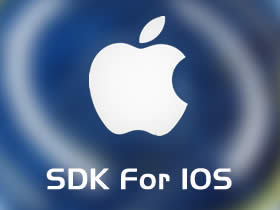- A+
Build Apps for the Active Lifestyle
Since 2001, our purpose-driven wearable devices have played essential roles in our customers’ active lifestyles. Now with Connect IQ, you can build apps for our expanding line of wearable devices.
Connect IQ is the first-ever open platform for third-party developers to create apps for our products. With Connect IQ, you can build on the features that have made our products an integral part of our loyal customers’ active lifestyles. You’ll be able to:
- Customize the base watch experience with colorful watch faces.
- Translate rich sensor data into new metrics and insights with custom data fields.
- Provide information at a glance with widgets.
- Offer solutions for active lifestyles with apps.
OS X Installation
The first step for using Monkey C is to point your PATH to the Monkey C bin directory.
To add to a single local shell instance:
$ export PATH=$PATH:path/to/monkeyc/bin
To add to a user profile:
$ touch ~/.bash_profile
$ open ~/.bash_profile
The above opens .bash_profile in a text editor. Add the line below to the file and save the changes:
$ export PATH=$PATH:path/to/monkeyc/bin
Windows Installation
This release works from the Windows NT shell.
The first step for using Monkey C is to point your PATH to the Monkey C bin directory:
set PATH=%PATH%;path\to\monkeyc\bin
Basic Commands
After installation, three new shell commands will be available: connectiq, monkeyc, and monkeydo.
connectiq launches the Monkey C simulator. Use this simple command to start the simulator in the background.
monkeyc calls the Monkey C compiler. The compiler can take code from multiple files and link them together into a single Monkey C executable (a PRG file). The optional -z argument allows resource files to be passed in. If your project uses multiple resource files separate them with the system path separator (‘;’ in Windows and ‘:’ in OSX). This allows the addition of bitmaps, drawables, fonts, strings, and menus to your executable. See the samples directory for a sample resource file.
The usage is:
monkeyc -o <output.prg> -m <manifest.xml> [-z resource.xml;resource2.xml] <file1.mb> [file2.mb]...
monkeydo runs a Monkey C executable in the simulator. You must have previously started the simulator with connectiq. The usage is:
monkeydo myApp.prg
An example of a typical build cycle would be:
connectiq
monkeyc -o myApp.prg -m manifest.xml myApp.m
bmonkeydo myApp.prg
- 微信:Mingtel
- 微信二维码名片
-

- 支付宝搜索:512000173
- 充值可抵扣,最多领38元!
-





